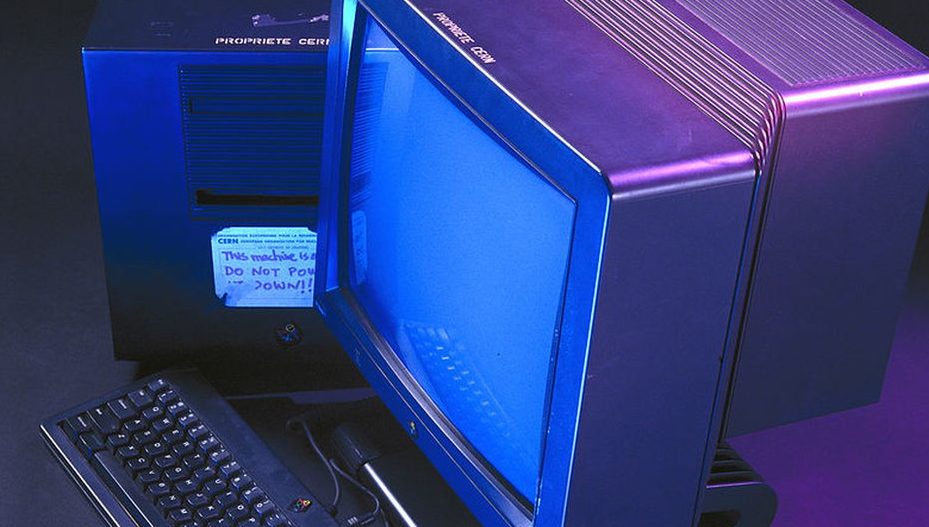We’ve all been amazed by technology, the internet, and everything that has come with it over the past few years. But it’s important to know where it all started and how the popularity of the internet started. You probably write those letters several times a day, but have you ever wondered what www means? Or maybe you’re considering starting your own website, in which case the following information will certainly be useful.
1. What is www
You’re certainly not the only one wondering what www stands for, what the acronym www stands for, what www means in a web address, or where the acronym www comes from. This basic information can be found here.
2. What is the World Wide Web
WWW is an acronym for World Wide Web. When we define the World Wide Web, we mean the way to access all information on the Internet. This information is mainly hypertext information (containing links to external sites) and websites hosted on various servers. Files can also be stored on the server via www.

The World Wide Web began as an application for transmitting research data, but has since grown to such extremes that it eventually becomes confused with the entire Internet network. However, the Internet is a network that connects devices from all over the world. What’s the use of www? The WWW is just one of many services available on the Internet for accessing information residing on that network’s infrastructure. Since current web browsers also provide interfaces to other Internet services, it’s easy to see where the confusion between WWW services and the Internet as a whole comes from.
3. History: when and where www started
If you want to know what year www came out, find out it’s been around since 1989. So www has been around for over 30 years. Today, all the significance of this Internet service is owed to this man, Tim Berners-Lee, a researcher at CERN (European Center for Nuclear Research) in Switzerland. He wanted to find a solution to facilitate communication between researchers. His goal is to make information in the field of particle physics accessible to as many people as possible.
While the Internet and hypertext have been around for a while, it was Tim Berners-Lee who thought of using the Internet to transmit hypertext. He articulated his vision in a document entitled “Information Governance: A Proposal”.
When did www start? Robert Cailliau and Tim Berners-Lee completed the first version of the World Wide Web (or W3) in 1990. In 1991, the WWW was already available on CERN computers. At the same time, these 2 employees also produced the first website and the first web server. The WWW has been open source since 1993. This means that the source code and WWW logs are freely available to everyone.
The European Center for Nuclear Research (CERN) signed an agreement with the Massachusetts Institute of Technology (MIT) in 1994 to form the World Wide Web Consortium (aka W3C), with Tim Berners-Lee as its director. The agency’s mission was to develop the WWW and standardize protocols.
Due to its freedom, the WWW was adopted, widely used and expanded. Basically, the WWW is the technology behind the proliferation of the Internet. By the time the WWW opened to the public at the end of the year, more than 500 web servers (including those at the White House) had sprung up, allowing users of the technology to collaborate across cultural and geographic boundaries.
4. How the World Wide Web Works
The basic elements of WWW development are:
- HTTP protocol (Hypertext Transfer Protocol), which allows users to communicate with web servers and access web pages
- HTML (Hypertext Markup Language), the standard language for defining and publishing web pages
- URL (Uniform Resource Locator), a common system for locating websites
The HTTP protocol contains a set of rules that determine how information is transmitted. Basically, it tells the server and browser what action to take.

The HTML language uses tags to define headings, headings, paragraphs, etc. These tags are used by browsers to identify content and are not displayed to users. Over time, other standards emerged, such as JavaScript, CSS (Cascading Style Sheets), and an extension of the HTTP language known as HTTPS (Hypertext Transfer Protocol Secure). Their downside is that they are new and not yet compatible with all browsers.
This URL can be used to find a document or website located on a different server. Web pages are usually written in HTML and are connected to each other by links called hypertext using the HTTP protocol. The browser downloads these web pages and displays them to the user.
To find the site you need:
- The address/domain name of the server
- the path to where the page is saved
- the full name of the file in which the web page is saved
- Agreement to access the page
5. What does World Wide Web Hosting mean?
One of the principles of the World Wide Web is the client-server model. The client is the Internet browser installed on the user’s device, the other part is represented by the HTTP server.
Like the WWW, web hosting is an Internet service. It includes providing the necessary space for the publication of the web page. The delivery company provides storage space to customers on server computers connected to the Internet, which are physically located in data centers.
If you’ve ever wondered where all of www’s information is stored, you’ve probably found the answer by reading this article: on the server. Small sites store web pages on one server, while large sites have their pages distributed across different servers, allowing users in different geographic locations to access information faster by getting it from the server closest to them
As mentioned earlier, web clients (Google Chrome, Mozilla Firefox, Internet Explorer, Opera, etc.) are browsers used to access this information from different servers. The browser can save and display recently visited pages (back button and forward button) and other pages that the user wants to visit again (bookmark button).
6. How World Wide Web Hosting Works
There are paid and free web hosting options.
The steps to enter the address from the browser address bar to display the page are as follows:- The browser connects to a local DNS server where it finds the IP (Internet Protocol) address of the domain specified in the URL entered:
- The browser connects to the server from the IP address it receives on port 80 for HTTP or port 143 for HTTPS.
- Send HTML file request command
- The web server serves the requested file
- the server closes the connection; for each new request, the client will open a new connection
- The browser displays the received content according to the HTML tags
In this way, the Internet browser fetches content from the servers of the company providing the web hosting.
7. The present and future of the World Wide Web
The WWW service has always been free and has been made available to everyone by CERN staff from the very beginning. Furthermore, the World Wide Web is the second decentralized item in the world after atmospheric oxygen. However, in recent years there have been increasing restrictions and taxes associated with using the WWW. For example, after the introduction of the European Union’s GDPR (General Data Protection Regulation) in 2016, many websites were closed to European users and could no longer be accessed.

Unfortunately, things don’t seem to be going in a better direction. Both online advertising and piracy are on the rise, so the World Wide Web appears to be developing in a direction that maximizes the economic benefit of its users.
The World Wide Web has changed dramatically since its inception, and much of the world today owes its meaning to this technology. There will certainly be changes in the future. Now that you know what www means and know basic information about www such as B. History and function, you can easily keep up with the later changes.





